The Ultimate Industrial Crankshaft Material Selection Guide: Powering Performance and Durability
Frankly speaking, the crankshaft is the heart of any reciprocating engine or compressor, transforming linear piston motion into rotational energy. It's a component subjected to immense and complex stresses—bending, torsional, and shear forces, often at high temperatures and speeds. Given these brutal operating conditions, it’s no surprise that the choice of material for an industrial crankshaft is not just important; it’s absolutely critical. Making the right decision here directly impacts the engine's longevity, efficiency, and overall reliability. This comprehensive industrial crankshaft material selection guide aims to demystify the process, helping you understand the nuances involved in choosing the perfect material for your specific application.
Have you ever wondered what makes one crankshaft last decades while another fails prematurely? Often, it boils down to the initial material selection and subsequent manufacturing processes. In my experience, overlooking the foundational material properties is a common pitfall that can lead to costly downtime and performance issues down the line. Let's dive deep into the world of industrial crankshaft materials.
Understanding Crankshaft Stresses and Demands
Before we even begin to talk about specific materials, it's paramount to grasp the hostile environment an industrial crankshaft operates within. Imagine a component constantly being twisted, bent, and hammered, thousands of times a minute. That's the life of a crankshaft. The primary stresses it endures include:
- Bending Stress: Caused by the combustion forces pushing down on the pistons, which are transmitted through the connecting rods to the crankpins. This tries to bend the crankshaft.
- Torsional Stress: Resulting from the engine's power output, this stress tries to twist the crankshaft along its axis. It's particularly significant in multi-cylinder engines where different crankpins are at various angles of rotation.
- Fatigue Stress: This is arguably the most critical. Crankshafts are subjected to cyclic loading – the constant repetition of bending and torsional stresses. Over time, even stresses below the material's yield strength can lead to fatigue cracks and eventual failure.
- Wear: The main journals and crankpins are in constant contact with bearings, requiring excellent wear resistance.
- Temperature: Engine operating temperatures can be high, affecting material strength and stability.
These demands necessitate materials with exceptional strength, high fatigue endurance, good wear resistance, and adequate toughness. Understanding these crankshaft material properties is the first step in making an informed decision for your industrial application.
Primary Material Candidates for Industrial Crankshafts
When it comes to manufacturing industrial crankshafts, two material families dominate the landscape: forged steels and cast irons. Each has distinct advantages and disadvantages, making them suitable for different applications based on performance requirements, cost, and manufacturing feasibility.
Forged Steel Crankshafts
Forged steel crankshafts are often considered the gold standard for high-performance and heavy-duty industrial applications. The forging process involves shaping the metal through localized compressive forces, typically with hammers or presses. This process refines the grain structure of the steel, aligning it with the direction of maximum stress, which significantly enhances the material's strength, ductility, and fatigue resistance.
Common steel grades used for forging industrial crankshafts include:
- AISI 4340 (or equivalent EN grades like 34CrNiMo6): This is a nickel-chromium-molybdenum alloy steel known for its excellent toughness, strength, and fatigue resistance, especially after heat treatment. It's a top choice for very high-stress applications.
- AISI 4140 (or equivalent EN grades like 42CrMo4): A chromium-molybdenum alloy steel offering good strength and wear resistance. It's widely used for medium to heavy-duty crankshafts due to its balance of properties and cost-effectiveness.
- Micro-alloyed Steels: These are newer developments that achieve high strength and fatigue resistance through controlled rolling and cooling, often eliminating the need for traditional quenching and tempering. They offer good machinability.
Advantages of Forged Steel:
- Superior Strength and Toughness: Forging refines the grain structure, leading to higher tensile, yield, and fatigue strengths.
- Excellent Fatigue Resistance: The aligned grain flow makes forged crankshafts highly resistant to crack initiation and propagation under cyclic loading.
- High Ductility: They can withstand significant deformation before fracturing, which is crucial for safety in critical applications.
Disadvantages of Forged Steel:
- Higher Cost: The forging process itself, coupled with the cost of alloy steels, makes these more expensive.
- More Difficult to Machine: Their hardness and strength can lead to longer machining times and increased tool wear.
- Longer Lead Times: The manufacturing process can be more complex and time-consuming.
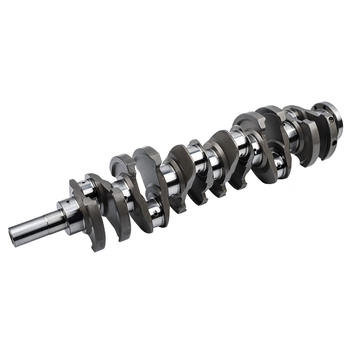
Cast Iron Crankshafts
Cast iron crankshafts are produced by pouring molten iron into a mold. While they don't possess the same ultimate strength as forged steel, modern advancements in cast iron technology, particularly with spheroidal graphite iron (SGI), have made them viable and often preferred for many industrial applications, especially where cost-effectiveness and good damping properties are priorities.
Key types of cast iron used:
- Spheroidal Graphite Iron (SGI) / Ductile Iron: This is the most common type for crankshafts. The graphite in its microstructure is in the form of nodules (spheroids) rather than flakes, which significantly improves its strength, ductility, and toughness compared to grey cast iron. It can be heat-treated to further enhance properties.
- Grey Cast Iron: While less common for crankshafts due to its brittleness, it's sometimes used for very low-stress applications or as a base material for specialized treatments. Its excellent damping capacity is a notable feature.
Advantages of Cast Iron:
- Cost-Effectiveness: Casting is generally a less expensive manufacturing process than forging, especially for complex shapes.
- Good Damping Properties: Cast iron has excellent vibration damping capabilities, which can lead to quieter engine operation.
- Good Machinability: Generally easier to machine than forged steel, reducing production time and costs.
- Design Flexibility: Casting allows for more intricate designs and hollow sections, potentially reducing weight.
Disadvantages of Cast Iron:
- Lower Strength and Toughness: Compared to forged steel, even ductile iron has lower tensile strength and is more prone to brittle fracture under extreme loads.
- Lower Fatigue Resistance: While improved in SGI, its fatigue strength is still generally lower than that of forged steel.
Interestingly enough, for many medium-duty industrial engines, the cast iron crankshaft advantages in terms of cost and manufacturing ease often outweigh the higher strength of steel, especially when the design can compensate for the material's limitations.
Other Specialized Materials
While less common, some specialized applications might consider:
- Compacted Graphite Iron (CGI): Offers properties intermediate between grey and ductile iron, with good strength, thermal conductivity, and damping. Gaining traction in some high-performance diesel engines.
- Aluminum Alloys: Extremely rare for industrial crankshafts due to their low strength and poor fatigue resistance at high temperatures, but sometimes explored for very lightweight, low-stress applications.
Key Material Properties to Evaluate
Regardless of whether you lean towards steel or cast iron, a thorough industrial crankshaft material selection guide must emphasize the specific properties that dictate a material's suitability. Here's what to look for:
Tensile Strength and Yield Strength
These indicate the material's resistance to breaking under tension and its ability to withstand deformation without permanent change. High values are crucial for handling the immense forces within an engine.
Fatigue Strength and Endurance Limit
As mentioned, fatigue is the primary failure mode for crankshafts. Fatigue strength is the maximum stress a material can withstand for a given number of cycles without failure. The endurance limit (if it exists for the material) is the stress level below which the material can theoretically endure an infinite number of cycles without failure. This property is paramount.
Hardness and Wear Resistance
The main journals and crankpins must be hard enough to resist wear from the bearings. Surface hardening treatments (like nitriding or induction hardening) are often applied to achieve the required hardness without compromising the core toughness.
Ductility and Toughness (Impact Resistance)
Ductility is the ability of a material to deform plastically without fracturing. Toughness is the ability to absorb energy and deform plastically before fracturing. Both are vital to prevent sudden, catastrophic failures, especially under shock loads or localized stress concentrations.
Machinability and Weldability
Ease of machining directly impacts manufacturing costs. Weldability is important for repair or for joining multi-piece crankshafts, though most industrial crankshafts are monolithic.
Corrosion Resistance
While internal engine environments are typically lubricated, certain industrial applications might expose the crankshaft to corrosive agents, making this a consideration.

The Selection Process: A Practical Guide
Choosing the right material isn't just about picking the strongest one; it's about finding the optimal balance of performance, durability, manufacturability, and cost for your specific application. Here’s how to approach the material selection process for industrial crankshafts:
1. Define Application Requirements
This is the starting point. What kind of engine or compressor is it for? What are the maximum power output, RPM range, and operating temperatures? What are the expected service life and maintenance intervals? Is weight a critical factor? Are there specific environmental considerations (e.g., marine, corrosive atmosphere)? A high-performance racing engine will demand different material properties than a slow-speed industrial generator.
2. Consider Manufacturing Processes
The chosen material must be compatible with the desired manufacturing process. If you require the ultimate strength and fatigue resistance, a forged steel crankshafts will be your go-to. If cost-effectiveness and good damping are priorities for a less demanding application, casting might be more suitable. The complexity of the crankshaft design can also influence this choice; casting often allows for more intricate shapes with fewer machining steps.
3. Evaluate Heat Treatment and Surface Treatments
Raw material properties are just one part of the equation. Heat treatments like quenching and tempering are crucial for developing the desired strength, hardness, and toughness in steel crankshafts. Surface treatments are equally vital:
- Nitriding: Introduces nitrogen into the surface, creating a hard, wear-resistant layer and improving fatigue strength.
- Induction Hardening: Rapidly heats and quenches the surface, creating a hardened layer for wear resistance.
- Fillet Rolling/Shot Peening: These mechanical processes induce compressive residual stresses in critical areas (like fillets), significantly improving fatigue resistance.
The chosen material must respond well to these treatments to achieve its full potential.
4. Cost-Benefit Analysis
To be honest, budget is almost always a factor. While a high-end alloy steel might offer superior performance, its higher material and manufacturing costs might not be justified for every application. Conversely, opting for a cheaper material that leads to premature failure will result in far greater long-term costs due to downtime and repairs. It's about finding the sweet spot where performance meets economic viability. Many experts agree that investing in the right material upfront saves significant money over the lifespan of the equipment.
5. Quality Control and Testing
Regardless of the material chosen, rigorous quality control is essential. This includes:
- Chemical Composition Analysis: Ensuring the material meets specifications.
- Mechanical Property Testing: Tensile, impact, and fatigue testing.
- Non-Destructive Testing (NDT): Such as magnetic particle inspection, ultrasonic testing, or eddy current testing to detect internal and surface flaws.
- Metallographic Examination: To verify grain structure and heat treatment effectiveness.
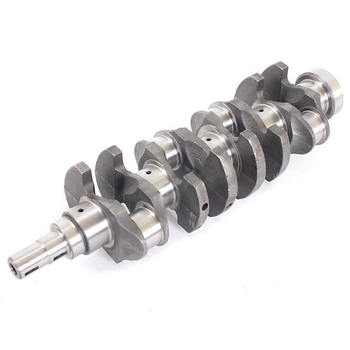
Conclusion: Making the Right Choice for Longevity and Performance
The crankshaft is a highly stressed component, and its material selection is a decision that reverberates throughout the entire engine or compressor system. There's no one-size-fits-all answer, as the optimal choice depends heavily on the specific application's demands, performance targets, and economic constraints. This industrial crankshaft material selection guide has highlighted the critical factors: understanding the stresses, knowing the capabilities of forged steels versus cast irons, and meticulously evaluating key material properties.
Ultimately, the goal is to select a material that offers the necessary strength, fatigue resistance, and wear characteristics to ensure reliable, long-term operation without over-engineering and incurring unnecessary costs. By carefully considering all these aspects, you can make an informed decision that truly powers performance and ensures the durability of your industrial machinery. It's worth noting that continuous advancements in metallurgy mean new materials and processing techniques are always emerging, so staying informed is key to long-term success.
For more detailed information, please visit our official website:Industrial crankshaft material selection guide
About the author: Dr. Anya Sharma is a materials science engineer with over 15 years of experience specializing in high-stress industrial components. Her expertise lies in metallurgical analysis, fatigue life prediction, and advanced manufacturing processes for critical engine parts. She has consulted for leading heavy machinery manufacturers worldwide, helping them optimize material selection for peak performance and extended operational life.
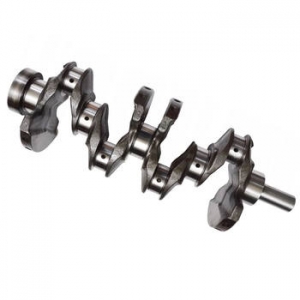 The Ultimate Guide to Getting
The Ultimate Guide to Getting
 The Unsung Heroes: Unveiling t
The Unsung Heroes: Unveiling t
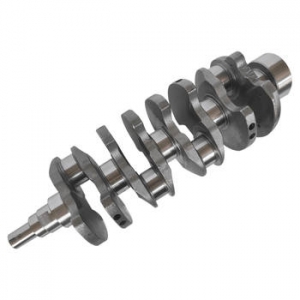 Unlocking Power: A Deep Dive i
Unlocking Power: A Deep Dive i
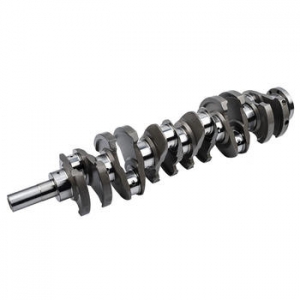 The Ultimate Industrial Cranks
The Ultimate Industrial Cranks
